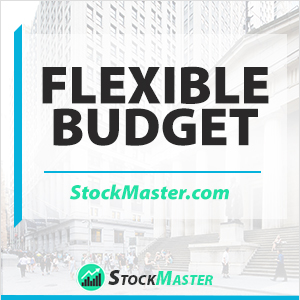 What is a Flexible Budget?
What is a Flexible Budget?
Definition: A flexible budget is a financial plan that varies based on volume or activities in production. The budget is prepared based on the current actual amount of output. It also uses immediate revenues and expenses as the baseline, to estimate how revenues and expenses will change in the future based on changes in output.
Understanding Flexible Budget Guide
Often referred to as a variable budget, managers use a flexible budget to estimate how a business is likely to perform in a given financial year. Likewise, such budgets are used to evaluate successful and unsuccessful areas of the previous accounting period. In this case, management can compare budgeted numbers and actual numbers to see where improvements are needed going forward.
In order to predict how changes in costs are likely to affect output, a business must be able to identify fixed and variable costs. In this case, variable costs must appear as a percentage of the total revenue or constant rate per unit.
At its purest form, a flexible budget alters expenses depending on how revenues change. In the case of a flexible intermediate budget, it is common to find expenditure varying on the impact of other measures other than revenues. In the case of an advanced flexible budget, expenditures might vary with certain ranges of revenues as well as other activities that have an impact on production.
Preparing a Flexible Budget Template
A flexible budget is prepared using five columns. The first column is used to list sales and expenses. The second column lists variable costs as a percentage of the unit rate as well as the total fixed costs. The other three columns can list different output levels as well as changes in variable costs based on output.
The steps involved in the preparation of a flexible budget include:
- identify fixed costs and separate them in the budget template
- determine the extent at which variable costs are likely to change as output varies
- create a budget model whereby fixed costs are hardcoded while variable costs are typically written as a percentage of output
- Enter the actual figures into the budget. the updates could be on sales as well as output and variable costs
Flexible Budget Advantages
A flexible budget acts as an ideal financial planning tool in business settings whereby costs are closely aligned to underlying business activities. Retail environments would be ideal in this case whereby any overhead activity or cost can be separated and treated as if they were a fixed cost.
Flexible budgets can also act as ideal financial measuring tools to evaluate management performance. Given that output would change based on changes in costs and level of production, one can gauge whether management policies and plans are working. In business, budgets should always align expectations with various levels of production.
Flexible budgeting can also go a long way in updating a budget for which revenue and other figures are yet to be factored in. Managers can use this opportunity to verify all fixed costs and variable expenses before any production operation commences.
Flexible Budget Disadvantages
Formulating and administering a flexible budget is no easy task given that most costs in a business are rarely variable. A great deal of time goes towards formulating fixed cost components and developing cost formulas that might not work in the end.
Similarly, it is not possible to load flexible budget figures into accounting software for comparison with financial statements. This can only be done upon completion of an accounting period to be able to issue financial statements that compare actual and budgeted figures.
The flexible budget model only makes it possible to compare actual expenses and budgeted expenses. With the model, it is not possible to compare budgeted revenues to actual revenues. Similarly, it is not possible to ascertain whether actual revenues are higher or lower than estimates.
Flexible budget works best with businesses and companies that deal with a wide array of variable costs that change significantly with changes in output. Likewise, it would not be useful in small business settings.
